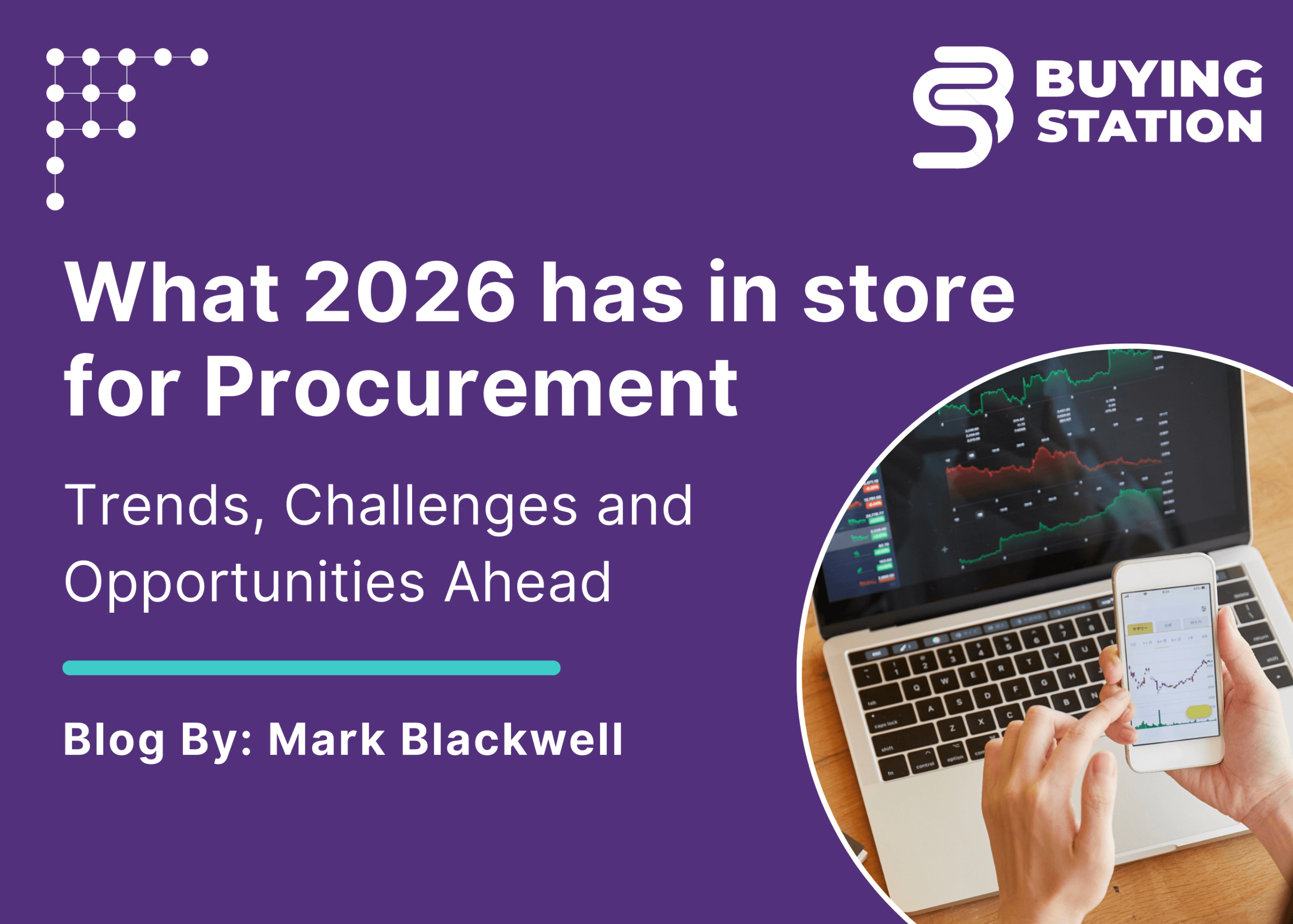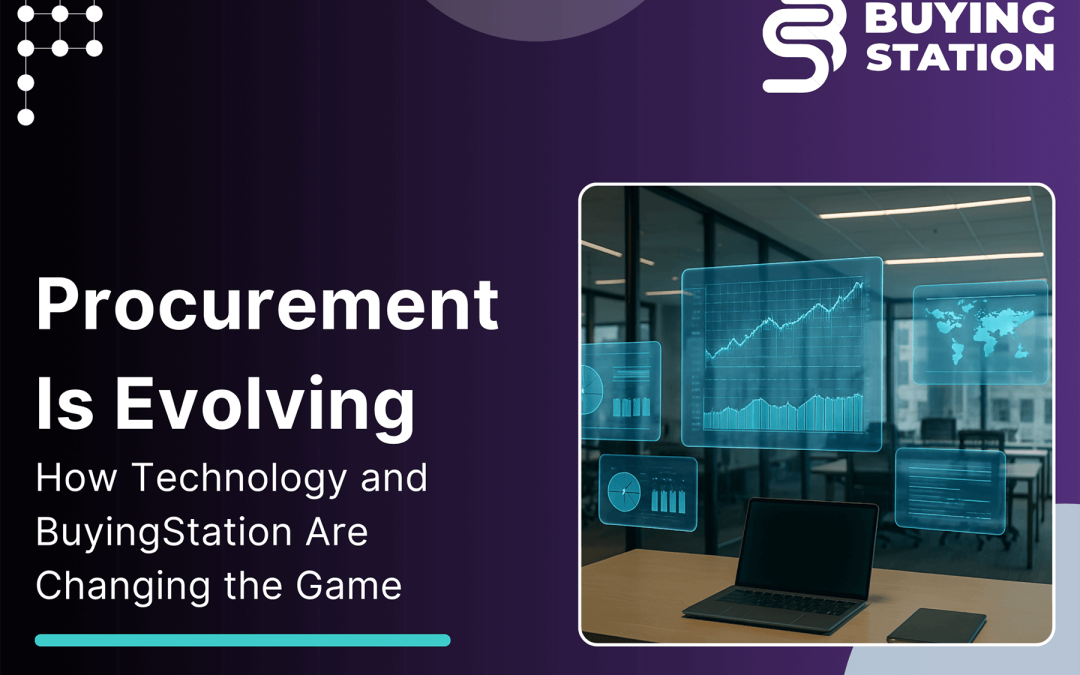I thought for this blog I would look ahead and see what’s in store for procurement in 2026. Procurement has never been more dynamic, crucial or more critical to business success. As we head into 2026, the function is and has been evolving from a more transactional cost control department into a more strategic player built on resilience, sustainability and innovation.
From the big talk of 2025 agentic AI through to ESG expectations, the next year will be a defining moment on how organisations source, spend and collaborate with suppliers. Here’s what I think we should expect and how to prepare.
From Cost Control to Value Creation
In 2026, procurement leaders will move beyond simply chasing the lowest price. Instead, the focus will be on total cost of ownership (TCO), supplier performance, risk mitigation and long-term value for their business.
Supply chain disruptions, inflationary pressure and sustainability mandates have shown that cheapest doesn’t always mean best. Smart organisations will look for resilient, innovative suppliers they can work with, often closer to home, to balance cost with agility and quality. This will lead and enable them to build strong supplier partnerships around innovation and resilience, not just pricing.
Digital Transformation Accelerates
By 2026, digital procurement will no longer be a future ambition (you just need to look at the themes of the 2025 conference season), it will be the standard.
AI, automation and predictive analytics are reshaping how teams source suppliers, manage contracts and monitor spend.
e-procurement platforms and cloud-based sourcing tools are enabling real-time visibility into supplier performance and risk. Tasks like invoice matching RFQs and contract reviews will increasingly be handled by intelligent automation. This shift frees procurement professionals to focus on strategy, relationships and value creation, steering clear of more manual processes and paperwork.
Use 2026 to focus on automating repetitive processes so you can focus on strategic decision-making opportunities.
Sustainability and ESG Take Centre Stage
Sustainability is not just a buzzword anymore whispered in corridors, it is becoming something more, a business imperative you might say.
In 2026, procurement functions will be judged on their environmental, social and governance (ESG) impact as much as on savings and efficiency.
In 2026, procurement teams can expect greater emphasis on reducing Scope 3 emissions, ensuring ethical labour practices across the supply chain, supporting local and diverse suppliers to enhance social value, and tracking end of life product impact to meet circular economy goals. Coupled with tightening UK and EU regulations and rising customer expectations, organisations that embed ESG performance criteria into every RFP and supplier contract will be best positioned to lead the way.
Data, Risk and Transparency Dominate
The supply chain landscape in 2026 will remain uncertain. From geopolitical instability to cyber threats, for example JLR and M&S, procurement leaders must embrace data-driven decision-making to stay ahead.
Digital dashboards will integrate spend analytics, supplier performance and risk alerts in one place. Predictive analytics will help teams identify weak spots before they cause disruption.
Transparency will also become a non-negotiable.Investors and customers want to see exactly where products come from and under what conditions they are made.
Now is the time to invest in supplier data tools that combine risk, compliance and performance data in a single view.
Skills and Culture Shift in Procurement Teams
As automation starts to take over more of the repetitive tasks, the human side of procurement will shine brighter than ever.
In 2026, procurement professionals will need to upskill and develop expertise beyond traditional sourcing, becoming more digitally literate and proficient in data analytics, strategic negotiation and sustainability to stay competitive in a rapidly evolving landscape.
The procurement function will evolve into a cross-functional business partner, collaborating with finance, operations and sustainability teams to create value rather than just cut costs.
Begin 2026 by upskilling your team in digital tools, data analysis and ESGs. Future-ready procurement is powered by people and supported by tech.
Regional and Local Sourcing on the Rise
The global shocks of recent years from COVID-19 to geopolitical disruptions (for example the war in Ukraine) have pushed organisations to rethink their sourcing models.
In 2026, many UK and European companies will pivot toward regional suppliers, reducing dependency on long and fragile international supply chains.
This doesn’t just build resilience; it also supports local economies and reduces carbon footprint. I knew a business that used to ship everything to its head office warehouse, only to re-distribute it back out.
Use 2026 to re-evaluate your supplier map and identify opportunities for near market sourcing.
Preparing for 2026: Your Procurement Roadmap
To thrive in 2026, organisations should start planning now. Below is a recommended to do list:
- Audit your current processes: Identify inefficiencies, data silos and manual bottlenecks. Move away from spreadsheets for example.
- Invest in digital infrastructure: Adopt an AI-enabled ProcureTech / procurement system for smarter decision-making.
- Re-think supplier strategy: Prioritise resilience, innovation and sustainability over lowest price.
- Embed ESGs in every step: Make sustainability a measurable part of your procurement KPIs.
- Upskill your people: Equip your team with digital, analytical, and ethical procurement skills.
In Summary
2026 will be a transformative year for procurement.
Those who embrace digital innovation, build transparent and sustainable supplier ecosystems and elevate procurement to a strategic business driver will come out ahead.
The future of procurement extends far beyond traditional spend management, encompassing a broader vision centred on strategic value creation, enhanced resilience and a strong alignment with organisational purpose.






